#animated skills bar html css
Explore tagged Tumblr posts
Text
animated progress bar
#progress bar css#progress bar html css#codingflicks#html css#frontend#animated skill bar#css#html#css3#code#learn to code#frontenddevelopment
3 notes
·
View notes
Note
Anon so this doesn't come from my main but it's nsfruitw- I LOVE YOUR BLOG CODING OMG??? THE WORKING BUTTONS AND MOVING WINDOWS ARE SO AWESOME???? I'm so excited for Dee's ask blog!!!
<OOC:>
Ahhhhhh!!! thank you!!! I had three different potential blogs.. but a lot of them didn't really met my wishes/criteria.
Which in case you're interested were:
Windows 98 look
Search bar
Visible tags
One Column
Separate Window for your Profile Info with a picture. (maybe separate icons or a lil menu for links)
No endless scrolling/seperate pages
I will put everything else under the cut since the post became quite long haha
This was one of the first themes I tried out (tbh I kinda jumped between all of them, trying stuff out)
I loveeee the start bar on this one, the icons and that it can be one or two columns. But it has no search bar and I didn't like that the profile section is super small, has no picture and couldn't be swapped to the left instead of the right side. I'm not confident enough in my html/css skills to competently yoink that start bar and transplant it into a different theme
Pros VS Cons: + animated start-bar (with accurate time in the corner) + one column (or two columns) + Windows 98 look + functional corner buttons + icons + custom background picture - no search bar - tiny info profile window, no picture (can't be moved to the left side) - endless scrolling - no visible tags

I prefer this theme for the most part over the previous one.. even if i loveee the functional startbar feature there! Its practically perfect. it can be one or two columns (i prefer one column blog layouts personally) You can add a lil picture in the profile section, its on the left side and you have a search bar!
I also looooveee that the post windows look extremely accurate and that the tags are always visible. (< another thing thats often kinda hidden in themes, so i tend to forget about it) Also the lil corner buttons can actually be used to like or reblog the post! what a highlight<3. my only issue was that i couldnt add a background picture.. and i kinda liked the idea of having separate icons for obvious links like I do now.
Pros VS Cons: + Windows 98 look + functional corner buttons + one column (or two columns + No endless scrolling (page by page) + Left side Info Window with picture and links + Visible tags
- no custom background picture

Another theme that I tried out is this one
They made the same theme I ended up using. It has a built in music player (that wont auto run!) a profile section + picture, customizable icons and background. But the biggest thing for me is that it doesn't have a search bar and I really need/want searchbars in my themes.
It's a really solid theme! It just fell a lil short for what I wanted to have
Pros VS Cons: + Windows 98 look + one column + No endless scrolling (page by page) + Left side Info Window with picture and links + Visible tags + music player (bonus) + custom icons and custom background picture + custom lil link window
- no searchbar (my biggest issue with a lot of themes haha)

Okay so last is the theme I ended up using which is this one:
It's very similar to the previous theme (Nostalgia 98) and was made by the same person. I edited the code a lil to have the tags be visible instead of needing to hover and to add another icon for links. It works but it’s also the only icon that isn’t draggable haha
Pros VS Cons: + Windows 98 look + one column + No endless scrolling (page by page) + Left side Info Window with picture and links + custom icons and custom background picture + custom icons for custom links
- no visible tags (I edited the code a lil so they're permanently visible)
5 notes
·
View notes
Text
Learn Web Design HTML, CSS, JavaScript, and Bootstrap

Web Design - as Introduction to
Now, in the contemporary high-tech world, Learn Web Design HTML CSS JavaScript and Bootstrap is one of the most in-demand skills. It involves creating your own site, building a career as a web designer, or simply gaining essential knowledge. This includes mastering web technologies like HTML, CSS, JavaScript, and Bootstrap. At TCCI Computer Coaching Institute, we offer high-quality training to help you design stunning, responsive websites.
HTML - the Backbone of Web Development
What is HTML?
Web pages from HTML (HyperText Markup Language) form the backbone of these web pages. Here is the basic framework for showing web content.
Basic Structure of an HTML Page
An HTML document consists of various headings, paragraphs, links, images, and so on. This tags keep content in order.
Key HTML elements and tags
to for headings
for paragraphs
for links
to place images
CSS-the web has Usable Styling
Understanding CSS and Its Importance
CSS styles HMTL elements. It beautifies HTML and makes any content visually appealing.
Two Types of CSS
Inline CSS – Applied to a single HTML element.
Internal CSS – Defined between a tag in the HTML document.
External CSS – Different .css file.
JavaScript – for Interaction on Websites
JavaScript language is heftier most important interactive programming language by which the websites become highly dynamic, i.e., forms, sliders, animations are created.
Main JavaScript Concepts
-Variables and Data Types
-Functions and Events
-DOM Manipulations
Lessening Work in Web Design-Bootstrap
Bootstrap itself is one of the most widely used front-end frameworks, which is why it is easier to design for a site that will hold lots of images in a responsive manner. It has various pre-designed components, such as navigation bars, buttons, and forms. With these pre-designed components, we can create our pages easily and simply build our web pages with a professional look.
Why learn Web Design from TCCI?
TCCI Computer Coaching Institute prides itself on practical and hands-on training, complete with expert faculty, which would ensure that web development becomes actualized for you. The blessed flexibility in choice of learning mode caters for students and working learners.
Conclusion
Web design will bring you numerous career opportunities in the broadly expanding IT industry. You may either opt to be a front-end developer or even want to establish your own business in web designing. Important portals to becoming an expert, such as those at TCCI in HTML, CSS, JavaScript, and Bootstrap, have been opened before you.
Location: Ahmedabad, Gujarat
Call now on +91 9825618292
Get information from https://tccicomputercoaching.wordpress.com/
#Computer classes in bopal Ahmedabad#Computer classes near me#JavaScript Training in Ahmedabad#TCCI - Tririd Computer Coaching Institute#Web Design course In Ahmedabad
0 notes
Text
What’s the Difference Between Front-End and Back-End Development?

Web development is all about building websites and applications, and it’s divided into two main parts: front-end and back-end development. These two work together to make websites look good and function properly, but they have different tasks, tools, and skills. Let’s explore the differences in a simple way.
What is Front-End Development?
Front-end development is everything on a website or app that you can see and click on, like buttons, images, text, and menus. It’s all about making the website look nice and easy to use, so users can easily navigate and interact with it.
Example: When you visit a website and click on a button, the design you see and the way the button works is the result of front-end development.
Key Responsibilities of a Front-End Developer
Designing the user interface (UI): Creating how the website looks and making sure it's easy to use.
Making designs work on all devices: Ensuring the website looks good on phones, tablets, and computers.
Adding interactivity: Making the website interactive with things like buttons, menus, and animations.
Languages and Frameworks
Core Languages
HTML: Builds the structure of a website.
CSS: Styles the website with colors, fonts, and layout.
JavaScript: Adds interactivity like dropdowns and sliders.
Frameworks and Libraries
React.js: Used for building dynamic websites.
Angular: A powerful tool for building complex apps.
Vue.js: A simple and flexible tool for modern websites.
Bootstrap: Helps design websites that work well on all devices.
What is Back-End Development?
Back-end development is everything that happens behind the scenes on a website. It makes sure the website works properly by managing things like data storage and the server. When you do something on a website, like clicking a button or submitting a form, the back-end makes sure the right information is processed and sent where it needs to go.
Example: When you log into a website, the back-end makes sure your username and password are correct, finds your information in a storage system, and lets you into your account.
Key Responsibilities of a Back-End Developer
Managing Data: A back-end developer makes sure that data is stored safely and can be retrieved when needed.
Writing Code for the Server: They write the instructions that tell the website how to process actions, like when a user submits a form.
Making the Website Fast and Safe: They ensure the website works quickly and securely, protecting it from potential problems.
Languages and Frameworks
Core Languages
Python: Easy to learn and used with frameworks like Django and Flask.
Java: Great for large applications, often used with the Spring Boot framework.
PHP: Used for creating dynamic websites, with Laravel as a key framework.
Ruby: Often used with the Ruby on Rails framework for quick development.
JavaScript (Node.js): Allows developers to use JavaScript for both the front-end and back-end.
C#: Often used with ASP.NET for building web applications.
Databases
SQL-Based: Like MySQL, PostgreSQL, and Microsoft SQL Server for structured data.
NoSQL-Based: Like MongoDB, Cassandra, and DynamoDB for unstructured data.
The Connection Between Front-End and Back-End
Front-end and back-end work together to ensure the website functions correctly:
Front-End Role: When you visit an education website, the front-end shows you things like course listings, a search bar, and a login form to register or sign in.
Back-End Role: When you search for a course or log in, the back-end processes your request, checks the available courses in the database, and verifies your login details.
Front-End Role: After the back-end processes everything, the front-end shows you the list of courses or confirms your login and takes you to your student dashboard.
For example, when you want to enroll in a course, the front-end displays the course options. Once you select a course, the back-end checks if you're eligible, processes your enrollment, and confirms it. The front-end then shows your updated enrollment status.
Skills Required
Front-End Developer Skills
Proficiency in HTML, CSS, and JavaScript.
Knowledge of front-end frameworks like React, Angular, or Vue.js.
Experience with responsive and accessible design.
Basic understanding of back-end APIs for better integration.
Back-End Developer Skills
Knowledge of server-side programming languages like Python, Java, or PHP.
Familiarity with frameworks like Django, Flask, or Node.js.
Experience with databases (SQL and NoSQL).
Understanding of APIs, security practices, and server management.
Which One You Should Choose?
Choose Front-End Development if you enjoy creating visually appealing websites and focusing on how users interact with them. You’ll work on designs, layouts, and make sure everything looks good and functions smoothly for the user.
Opt for Back-End Development if you enjoy problem-solving, working with data, and focusing on how everything behind the scenes works. You’ll deal with servers, databases, and ensuring the website runs efficiently.
Consider Full-Stack Development if you're interested in both the front-end and back-end. You’ll get to work on all parts of a website, from what users see to how the data is managed and processed.
Average Salary for each Development Type
Front-End Developer
Focus on visual design and user experience, creating interactive and appealing websites.
₹6 LPA - ₹20 LPA (India)
$60,000 - $120,000 (Outside India)
2. Back-End Developer
Work on server-side logic, databases, and handling the functionality behind the scenes.
₹8 LPA - ₹25 LPA (India)
$70,000 - $130,000 (Outside India)
3. Full-Stack Developer
Work on both front-end and back-end, managing the entire website development process.
₹10 LPA - ₹30 LPA (India)
$80,000 - $150,000 (Outside India)
KEY TAKEAWAYS
Career Paths and Roles
1. Front-End Developers
Front-End Developer
Web Designer
Front-End Engineer
React Developer / Angular Developer
UI/UX Designer
2. Back-End Developers
Back-End Developer
Database Administrator (DBA)
Server-Side Developer
API Developer
DevOps Engineer
Front-end and back-end development are two parts of building a website—they depend on each other to create websites that work well and look good. Understanding the differences can help you choose which path is right for you.
Both areas offer great job opportunities and are important for creating the websites and apps we use every day.
#Difference between front end and back end#Front end vs back end#Responsibilities of front-end and back-end developers#Web development career paths#Languages and frameworks for front and back end
1 note
·
View note
Text
Wearing Many Hats: The Essential Skills of a Full-Stack Developer
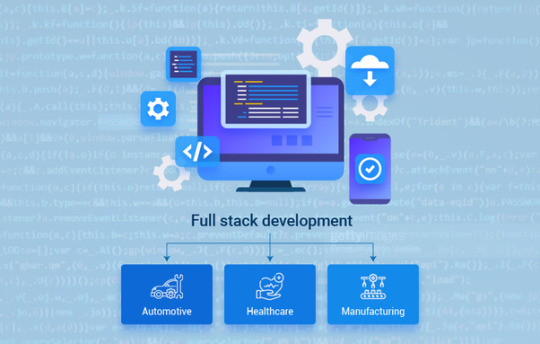
In the dynamic world of web development, the term "full-stack developer" has become synonymous with versatility and expertise. Unlike their front-end or back-end counterparts, full-stack developers are the ultimate problem-solvers, comfortable navigating the entire web development lifecycle, from user interface (UI) design to server-side scripting. But what exactly does it take to wear these many hats effectively? Let's delve into the essential skillset that defines a successful full-stack developer.
Front-End Fluency: Crafting a Seamless User Experience
The front-end is the user's playground, the visual and interactive layer they navigate. A full-stack developer needs to be well-versed in the languages that bring websites and applications to life:
HTML (Hypertext Markup Language): The foundation of web pages, HTML structures the content and layout.
CSS (Cascading Style Sheets): CSS dictates the visual appearance of a website, controlling elements like colors, fonts, and layouts.
JavaScript (JS): This dynamic language adds interactivity to web pages, enabling features like animations and user input.
Beyond the Basics: Mastering Frameworks and Libraries
Modern web development heavily relies on frameworks and libraries that streamline the coding process and offer pre-built functionalities. Full-stack developers should be comfortable with popular front-end frameworks like:
React: A powerful library for building dynamic user interfaces with reusable components.
Angular: A comprehensive framework known for its structure and scalability.
Vue.js: A versatile framework known for its flexibility and ease of use.
These frameworks provide a solid foundation for crafting beautiful, interactive user experiences.
Back-End Brawn: Building the Engine of the Web
The back-end is the unseen force behind a website, handling data processing and server-side logic. Full-stack developers need a solid grasp of:
Server-Side Scripting Languages: Languages like Python, PHP, Ruby, or Java power the functionalities and logic behind websites.
Databases: MySQL, PostgreSQL, or MongoDB are some popular databases for storing and managing website data.
APIs (Application Programming Interfaces): APIs allow communication between different applications, a crucial skill for integrating external services.
Understanding back-end technologies enables full-stack developers to build robust and scalable web applications.
Beyond the Code: The Soft Skills of a Full-Stack Developer
Technical expertise is only half the story. Full-stack developers need a well-rounded skillset that includes:
Problem-Solving: The ability to identify, analyze, and solve complex technical challenges is paramount.
Communication: Effective communication with designers, clients, and other developers ensures all are on the same page.
Teamwork: Full-stack developers often collaborate in teams, requiring the ability to work effectively with others.
Continuous Learning: The tech landscape is constantly evolving, so a commitment to lifelong learning is crucial.
These soft skills are essential for navigating the collaborative nature of web development projects.
The T-Shaped Advantage: Specialization Within Versatility
The ideal full-stack developer is often described as having a "T-shaped" skillset. The horizontal bar of the "T" represents the broad knowledge base across front-end and back-end technologies. The vertical bar represents a deeper specialization in one or two specific areas, such as front-end framework expertise or back-end security.
This combination of breadth and depth allows full-stack developers to tackle a wider range of projects while excelling in their chosen area of specialization.
Conclusion: The Full-Stack Future
The demand for full-stack developers is on the rise. Their versatility and ability to manage all aspects of web development make them valuable assets in today's fast-paced digital world. If you're looking for a stimulating and challenging career path, developing the skills mentioned above can open doors to exciting opportunities in the ever-evolving world of web development. So, are you ready to wear the many hats of a full-stack developer?
0 notes
Text
web development
Creating a successful web development blog involves a combination of technical expertise, engaging content, and a well-structured approach. Here's a comprehensive guide to get you started:
1. Define Your Niche and Audience
Identify Your Niche: Decide whether you want to focus on front-end development, back-end development, full-stack development, specific frameworks (like React, Angular, Django), or other topics such as web design, performance optimization, or web security.
Know Your Audience: Determine if your content is for beginners, intermediate developers, or advanced professionals. Tailor your content to their needs and skill levels.
2. Set Up Your Blog
Choose a Platform: Popular choices include WordPress, Ghost, or static site generators like Jekyll or Hugo.
Select a Domain Name: Pick a domain name that reflects your brand and is easy to remember.
Hosting: Choose a reliable hosting provider. For static sites, consider Netlify or GitHub Pages.
3. Design and User Experience
Responsive Design: Ensure your blog is mobile-friendly.
User-Friendly Navigation: Make it easy for users to find content with a clear menu and search functionality.
Performance Optimization: Optimize your blog for speed. Use tools like Google Lighthouse to check performance.
4. Content Strategy
Regular Updates: Post consistently. Create a content calendar to plan your posts.
Engaging Titles: Craft compelling headlines to attract readers.
Quality Content: Focus on creating high-quality, informative, and well-researched posts. Use code snippets, images, and videos to enhance your content.
SEO Best Practices: Use keywords effectively, optimize meta tags, and create descriptive alt text for images.
5. Types of Content
Tutorials and How-To Guides: Step-by-step guides are very popular in web development.
Case Studies: Share detailed analysis of projects you've worked on.
Opinion Pieces: Write about trends, best practices, and industry news.
Interviews and Guest Posts: Collaborate with other developers to bring new perspectives.
Project Showcases: Share your projects and the development process.
6. Promote Your Blog
Social Media: Share your posts on platforms like Twitter, LinkedIn, and relevant Facebook groups.
Developer Communities: Engage with communities on Reddit, Stack Overflow, and GitHub.
Networking: Connect with other bloggers and developers to cross-promote content.
7. Monetization Strategies
Affiliate Marketing: Promote tools and services you trust and earn a commission.
Sponsored Posts: Partner with companies for sponsored content.
Ads: Use Google AdSense or other ad networks.
Sell Products or Services: Offer e-books, courses, or freelance services.
8. Analytics and Feedback
Track Performance: Use Google Analytics to monitor traffic, user behavior, and popular content.
User Feedback: Encourage comments and feedback to understand what your readers value.
9. Continuous Learning and Improvement
Stay Updated: Keep up with the latest in web development by following industry news and trends.
Improve Your Skills: Continuously learn new technologies and improve your writing and technical skills.
Example Blog Post Outline
Title: Building a Responsive Navigation Bar with Flexbox
Introduction
Brief overview of the importance of a responsive navigation bar
What will be covered in the tutorial
Prerequisites
List of tools and knowledge required
Setting Up the Project
Creating the HTML structure
Adding basic CSS
Using Flexbox for Layout
Explanation of Flexbox properties
Applying Flexbox to the navigation bar
Making it Responsive
Media queries for different screen sizes
Ensuring usability on mobile devices
Final Touches
Adding animations and hover effects
Testing across browsers
Conclusion
Summary of what was learned
Encouragement to experiment further
Call to action (e.g., share the post, try a related tutorial)
Resources for Learning and Inspiration
Websites: MDN Web Docs, CSS-Tricks, Smashing Magazine
Books: "Eloquent JavaScript" by Marijn Haverbeke, "You Don’t Know JS" by Kyle Simpson
Podcasts: Syntax, ShopTalk Show
Final Tips
Be Patient: Building an audience takes time.
Be Authentic: Share your unique perspective and experiences.
Engage with Your Readers: Respond to comments and build a community around your blog.
Starting a web development blog can be highly rewarding, both personally and professionally. By following these steps, you’ll be well on your way to creating valuable content for the web development community.
1 note
·
View note
Text
Web Designing Course in Sonipat.
https://picklesanimation.in/sonipat/
Web Design Fundamentals: Basics of web template design, image and content optimization, and color theory. It also covers W3C recommendations and web structure.
Technical Skills:
HTML and CSS: Conversion of Photoshop web layouts to HTML web pages, ensuring compliance with contemporary web standards for functionality and accessibility.
JavaScript and jQuery: For dynamic content and interactivity.
PHP: For server-side scripting and database connectivity.
Responsive Design: Techniques to create responsive websites that work well on desktops, tablets, and smartphones, including frameworks for best practices in responsive design.
Multimedia and Animation:
Adobe Flash: Creating animated websites and characters.
Photoshop: Designing web pages and optimizing graphics for the web.
Advanced Tools and Techniques:
Dreamweaver: Writing and managing HTML and CSS code efficiently.
SEO Training: Techniques for optimizing websites for search engines.
FTP: Managing website uploads and server configurations.
Practical Application: Real-world projects to apply skills learned, including creating animated navigation bars, drop-down menus, contact forms with validation, and image sliders.
Final Project: Comprehensive project that integrates all elements of web design, including cross-browser compatibility and website hosting.
This curriculum is designed to equip students with the necessary skills to excel in the rapidly evolving field of web design (picklesanimation) ( Pickles Animation's blogs) (Pickles Animation).

For more detailed information, you can visit the official course.
0 notes
Text
Web Designing Course in Delhi. https://picklesanimation.in/best-web-designing-institute-in-delhi/
Certainly! Here's a structured course content outline for a web designing course offered by Pickles Animation:
Title: Web Design Course by Pickles Animation
Course Overview: This comprehensive course is designed to provide participants with the knowledge and skills required to create modern and user-friendly websites. From understanding design principles and HTML/CSS basics to mastering responsive design and UI/UX concepts, students will gain practical experience through hands-on projects and real-world case studies.
Course Content:
Introduction to Web Design
Understanding the importance of web design in creating effective online experiences
Overview of web design principles and elements
Introduction to web design tools and software
HTML Basics
Understanding the structure of HTML documents
Learning HTML tags and elements
Creating and organizing content with HTML
CSS Basics
Introduction to CSS syntax and selectors
Styling HTML elements with CSS
Understanding CSS properties and values
Responsive Web Design
Understanding the importance of responsive design
Creating flexible layouts using CSS media queries
Designing websites that adapt to different screen sizes and devices
Typography and Color
Choosing and pairing fonts for web typography
Applying color theory principles to web design
Creating harmonious color schemes for websites
Layout Design
Basics of layout design for web pages
Creating grids and wireframes for website layouts
Designing visually appealing and user-friendly interfaces
Navigation Design
Designing intuitive navigation systems for websites
Creating effective menu structures and navigation bars
Implementing breadcrumbs and other navigation aids
UI/UX Design Principles
Understanding user interface (UI) and user experience (UX) design
Conducting user research and usability testing
Designing user-centric interfaces and interactions
Introduction to JavaScript
Basics of JavaScript programming language
Adding interactivity and dynamic behavior to web pages
Using JavaScript frameworks and libraries (e.g., jQuery)
Project Development and Portfolio Building
Applying learned concepts to real-world web design projects
Building a professional web design portfolio
Presenting and showcasing web design projects effectively
Prerequisites: No formal prerequisites required, but a basic understanding of HTML and CSS is recommended.
Requirements: Computer with internet access, text editor (e.g., Sublime Text, Visual Studio Code).
Course Duration: [X] weeks/months, [X] hours of instruction per week.
Assessment: Quizzes, assignments, web design projects.
Certification: Certificate of completion.
Enrollment: Visit our website or contact us for enrollment details.
Feel free to adjust the content based on the specific features, curriculum, and goals of the web design course offered by Pickles Animation!

0 notes
Text
WEB DESIGN
In today's digital era, web design is vital, encompassing diverse skills and considerations for crafting engaging websites. It covers various techniques aimed at creating visually attractive, functional, and user-friendly websites. From captivating look of the webpage to seamless functionality across devices, web design is essential for website success.
Designing UI and UX of a web design:
Web design revolves around crafting and arranging visual and interactive elements that shape the user interface (UI) and overall user experience (UX) of a website. UI design, which emphasizes the layout and interactive components, such as buttons, menus, and navigation bars aims to create intuitive and visually engaging interfaces to enhance user interaction and navigation. UX design focuses on the user experience, considering how users interact with the website and aiming to optimize their overall satisfaction and enjoyment.
Responsiveness of the webpage design:
Responsive design is fundamental in web design, ensuring optimal display across devices. It adapts websites seamlessly to desktops, laptops, tablets, and smartphones. With the rise of mobile browsing, responsiveness is essential for consistent user experiences. By utilizing flexible grids, images, and CSS media queries, designers enhance usability and engagement for mobile users. It allows websites to dynamically adjust layout and content to suit various viewing environments.
Components of web design :
Typography and color scheme are integral components of web design that significantly impact the visual appeal and readability of a website. Selecting appropriate fonts and typography styles can enhance the readability and convey the website's tone and personality. Likewise the choice of color scheme influences the overall good look of the website that can create specific emotions and reinforcing brand identity.
Language useability:
Web design involves technical implementation using HTML, CSS, and JavaScript. HTML provides structure and content, while CSS manages presentation and styling. JavaScript enhances interactivity, enabling features like animations and form validation. Mastery of these technologies empowers designers to bring creative visions to life. With HTML for structure, CSS for presentation, and JavaScript for interactivity, designers create engaging websites. This comprehensive approach ensures websites captivate and engage users effectively.
Web design accessibility:
Designing with accessibility in mind involves corresponding to web accessibility standards such as the Web Content Accessibility Guidelines (WCAG), which provide guidelines and best practices for making web content operable and understandable for users with diverse abilities. Implementing features such as alternative text for images, keyboard navigation, and semantic HTML markup not only enhances accessibility but also improves the overall usability and search engine optimization (SEO) of the website.
The ongoing journey of web design:
Furthermore, web design extends beyond the initial creation of a website include ongoing maintenance, updates, and optimization. Regular monitoring and analysis of website performance metrics, such as page load times, bounce rates, and conversion rates, allow designers to identify areas for improvement and optimization. This iterative process of refinement ensures that the website remains relevant, user-friendly and aligned with evolving user needs and technological advancements.
In conclusion, web design stands as a base of digital success, shaping the online landscape with its blend of creativity, technical expertise and user-centric principles. Technox Technologies a web design company in coimbatore emerges as an ultimate destination for unlocking digital excellence. With a versatile array of services including logo design, web design and digital marketing. They offer a comprehensive suite of services to propel brand to new heights. Entrust Technox Technologies as the strategic partner in navigating the digital landscape, and moves the brand towards unparalleled success. Choosing them as a partner can be useful in achieving digital excellence.

0 notes
Text
Discover 25+ CSS Charts And Graphs
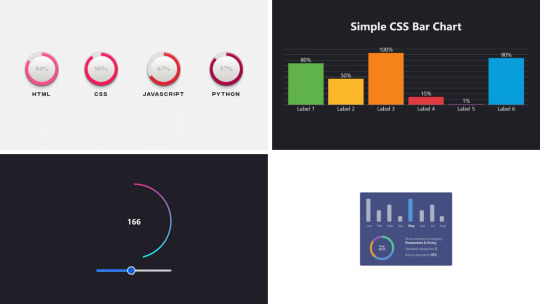
Welcome to CSS Monster, your go-to destination for discovering our curated collection of free HTML and CSS chart and graph code examples. These examples, carefully sourced from platforms like CodePen, GitHub, and other reputable resources, represent an exciting update to our July 2023 collection, introducing three new items to inspire your creativity. CSS, renowned for its versatility, offers a myriad of advantages when it comes to crafting charts and graphs: Flexibility: CSS empowers you with a high degree of customization, allowing the creation of charts and graphs that seamlessly align with your website's aesthetic. Interactivity: With the capabilities of CSS, you can design interactive charts and graphs that respond dynamically to user input, enhancing overall user engagement and experience. Performance: CSS-based charts and graphs are known for their swift loading times and optimal performance, ensuring a smooth user experience even on lower-end devices. We extend an invitation to explore our collection of CSS charts and graphs, tailored for both seasoned developers and those just starting their coding journey. We are confident that within this collection, you'll discover elements that ignite inspiration for your next project. It's worth noting that every item in our collection is freely available for use. So why wait? Embark on your exploration today and elevate your projects with the dynamic and visually appealing world of CSS charts and graphs! Author Hannah March 9, 2023 Links Just Get The Demo Link How To Download - Article How To Download - Video Made with HTML / CSS (SCSS) About a code PROGRESS DONUT CHARTS Compatible browsers:Chrome, Edge, Firefox, Opera, Safari Responsive:no Dependencies:- Author Adam Argyle February 12, 2023 Links Just Get The Demo Link How To Download - Article How To Download - Video Made with HTML / CSS / JS (Babel) About a code GRADIENT CIRCLE OUTLINE BOUND TO ANGLE Compatible browsers:Chrome, Edge, Firefox, Opera, Safari Responsive:yes Dependencies:- Author Mark Boots October 27, 2022 Links Just Get The Demo Link How To Download - Article How To Download - Video Made with HTML / CSS About a code SIMPLE CSS BAR CHART Compatible browsers:Chrome, Edge, Firefox, Opera, Safari Responsive:yes Dependencies:-
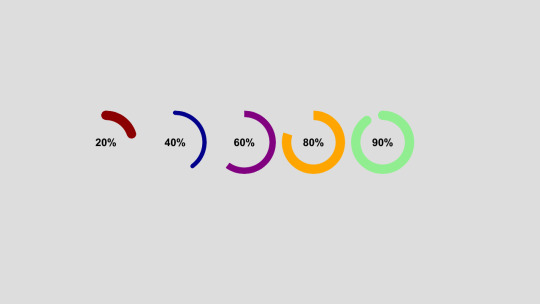
Author Temani Afif January 6, 2022 Links Just Get The Demo Link How To Download - Article How To Download - Video Made with HTML / CSS About a code CSS-ONLY PIE CHARTS Compatible browsers:Chrome, Edge, Firefox, Opera, Safari Responsive:no Dependencies:- Author Ana Tudor May 28, 2021 Links Just Get The Demo Link How To Download - Article How To Download - Video Made with HTML (Pug) / CSS (SCSS) About a code SKILLS CHART ANIMATION WITH A BIT OF HOUDINI MAGIC Compatible browsers:Chrome, Edge, Firefox, Opera, Safari Responsive:no Dependencies:-
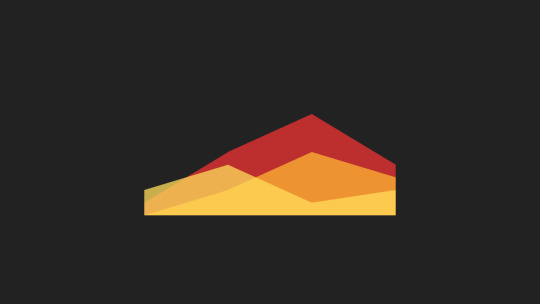
Author Rami November 19, 2020 Links Just Get The Demo Link How To Download - Article How To Download - Video Made with HTML / CSS About a code PURE CSS AREA CHART Compatible browsers:Chrome, Edge, Firefox, Opera, Safari Responsive:no Dependencies:-
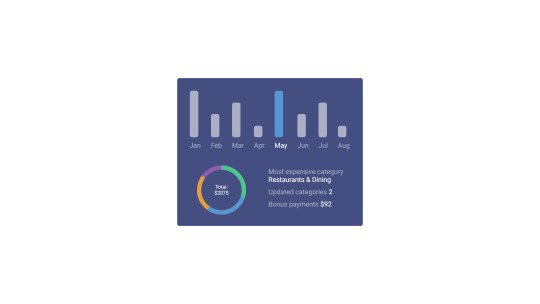
Author Jorge Mendes June 3, 2020 Links Just Get The Demo Link How To Download - Article How To Download - Video Made with HTML / CSS About a code GRAPH Compatible browsers:Chrome, Edge, Firefox, Opera, Safari Responsive:no Dependencies:-
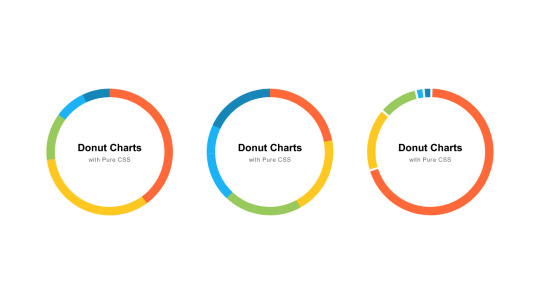
Author Jerry Low April 20, 2020 Links Just Get The Demo Link How To Download - Article How To Download - Video Made with HTML (Slim) / CSS (SCSS) About a code PURE CSS DONUT CHARTS Compatible browsers:Chrome, Edge, Firefox, Opera, Safari Responsive:no Dependencies:-
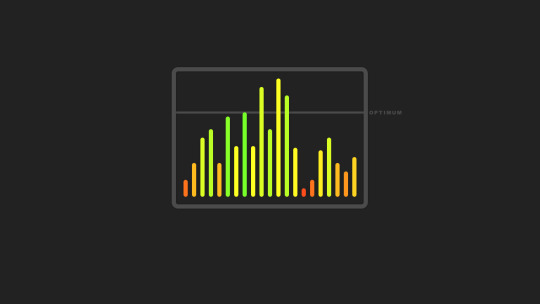
Author Ana Tudor May 21, 2019 Links Just Get The Demo Link How To Download - Article How To Download - Video Made with HTML (Pug) / CSS (SCSS) About a code PURE CSS BACKGROUND DEPENDING ON HEIGHT Compatible browsers:Chrome, Edge, Firefox, Opera, Safari Responsive:no Dependencies:-
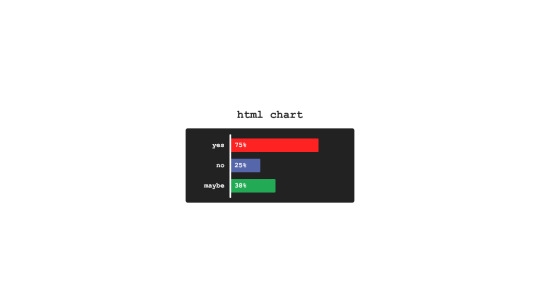
Author sean_codes April 17, 2019 Links Just Get The Demo Link How To Download - Article How To Download - Video Made with HTML (Pug) / CSS (SCSS) About a code HTML CHART Compatible browsers:Chrome, Edge, Firefox, Opera, Safari Responsive:no Dependencies:-
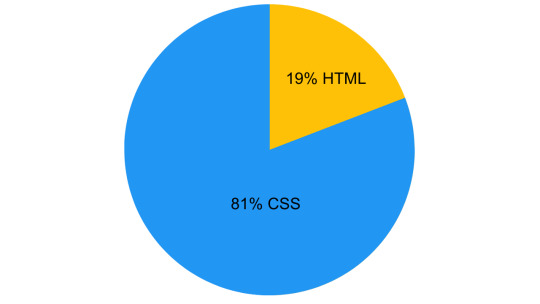
Author Bence Szabo April 13, 2019 Links Just Get The Demo Link How To Download - Article How To Download - Video Made with HTML / CSS About a code THIS PEN IS 19% HTML & 81% CSS Compatible browsers:Chrome, Edge, Firefox, Opera, Safari Responsive:yes Dependencies:-
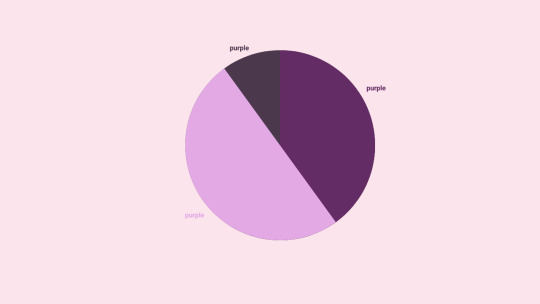
Author Anjanas_dh January 29, 2019 Links Just Get The Demo Link How To Download - Article How To Download - Video Made with HTML / CSS (SCSS) About a code PURPLE PIE CHART Compatible browsers:Chrome, Edge, Firefox, Opera, Safari Responsive:no Dependencies:- Author Sabine Robart January 13, 2019 Links Just Get The Demo Link How To Download - Article How To Download - Video Made with HTML / CSS (SCSS) About a code STATISTICS CARD Compatible browsers:Chrome, Edge, Firefox, Opera, Safari Responsive:no Dependencies:- Author Olivia Ng October 29, 2018 Links Just Get The Demo Link How To Download - Article How To Download - Video Made with HTML (Pug) / CSS (SCSS) / JS About a code CSS ANIMATION: A LINE GRAPH Compatible browsers:Chrome, Edge, Firefox, Opera, Safari Responsive:no Dependencies:simple-line-icons.css, jquery.js Author Ana Tudor July 4, 2018 Links Just Get The Demo Link How To Download - Article How To Download - Video Made with HTML (Pug) / CSS (SCSS) About a code INTERACTIVE, RESPONSIVE PIE CHART Compatible browsers:Chrome, Edge, Firefox, Opera, Safari Responsive:yes Dependencies:-
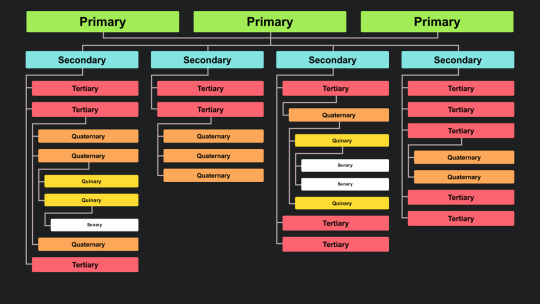
Author Erin E. Sullivan July 18, 2017 Links Just Get The Demo Link How To Download - Article How To Download - Video Made with HTML / CSS About a code SIMPLE AND RESPONSIVE ORGANIZATIONAL CHART Compatible browsers:Chrome, Edge, Firefox, Opera, Safari Responsive:yes Dependencies:-
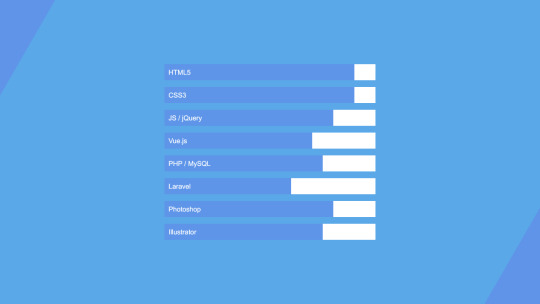
Author Champlow July 13, 2017 Links Just Get The Demo Link How To Download - Article How To Download - Video Made with HTML / CSS (Less) About a code BAR GRAPH Compatible browsers:Chrome, Edge, Firefox, Opera, Safari Responsive:no Dependencies:-
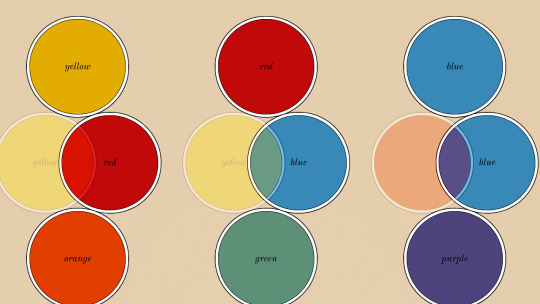
Author Chen Hui Jing February 24, 2017 Links Just Get The Demo Link How To Download - Article How To Download - Video Made with HTML / CSS (SCSS) About a code CHARLES HAYTER'S COLOUR DIAGRAMS Compatible browsers:Chrome, Edge, Firefox, Opera, Safari Responsive:yes Dependencies:- Author Nick Walsh February 14, 2017 Links Just Get The Demo Link How To Download - Article How To Download - Video Made with HTML / CSS (Sass) Read the full article
0 notes
Text

Animated skill bar
#animated skill bar#skill bar animation#css animation examples#pure css animation#codingflicks#html css#css#html#frontend#css3#frontenddevelopment#html css animation
3 notes
·
View notes
Text
How to use JavaScript for data visualization
Data visualization is the process of transforming data into graphical or visual representations, such as charts, graphs, maps, etc. Data visualization can help us understand, analyze, and communicate data more effectively and efficiently.
JavaScript is a powerful and popular programming language that can be used for creating dynamic and interactive data visualizations in web browsers. JavaScript can manipulate the HTML and CSS elements of a web page, as well as fetch data from external sources, such as APIs, databases, or files.
To use JavaScript for data visualization, we need to learn how to:
Select and manipulate HTML elements: We can use JavaScript to select HTML elements by their id, class, tag name, attribute, or CSS selector. We can use methods such as getElementById(), getElementsByClassName(), getElementsByTagName(), querySelector(), or querySelectorAll() to return one or more elements. We can then use properties and methods such as innerHTML, style, setAttribute(), removeAttribute(), appendChild(), removeChild(), etc. to manipulate the selected elements.
Create and modify SVG elements: SVG (Scalable Vector Graphics) is a standard for creating vector graphics in XML format. SVG elements can be scaled without losing quality, and can be styled and animated with CSS and JavaScript. We can use JavaScript to create and modify SVG elements, such as , , , , , etc. We can use methods such as createElementNS(), setAttributeNS(), appendChild(), etc. to manipulate the SVG elements.
Handle events: We can use JavaScript to handle events that occur on the web page, such as mouse clicks, keyboard presses, window resizing, page loading, etc. We can use methods such as addEventListener() or removeEventListener() to attach or detach event handlers to elements. We can also use properties such as onclick, onkeyup, onload, etc. to assign event handlers to elements. An event handler is a function that runs when an event occurs. We can use the event object to access information about the event, such as its type, target, coordinates, key code, etc.
Use AJAX: We can use AJAX (Asynchronous JavaScript and XML) to send and receive data from a server without reloading the web page. We can use objects such as XMLHttpRequest or Fetch API to create and send requests to a server. We can also use methods such as open(), send(), then(), catch(), etc. to specify the request parameters, send the request, and handle the response. We can use properties such as readyState, status, responseText, responseJSON, etc. to access the state, status, and data of the response.
These are some of the basic skills we need to use JavaScript for data visualization. However, writing JavaScript code from scratch for data visualization can be challenging and time-consuming. That’s why many developers use JavaScript libraries and frameworks that provide pre-written code and templates for creating various types of data visualizations.
Some of the most popular JavaScript libraries and frameworks for data visualization are:
D3.js: D3.js (short for Data-Driven Documents) is a JavaScript library for producing dynamic and interactive data visualizations in web browsers. It makes use of SVG, HTML5, and CSS standards. D3.js allows us to bind data to DOM elements, apply data-driven transformations to them, and create custom visualizations with unparalleled flexibility1.
Chart.js: Chart.js is a JavaScript library for creating simple and responsive charts in web browsers. It uses HTML5 canvas element to render the charts. Chart.js supports various types of charts, such as line, bar, pie, doughnut, radar, polar area, bubble, scatter, etc.2
Highcharts: Highcharts is a JavaScript library for creating interactive and high-quality charts in web browsers. It supports SVG and canvas rendering modes. Highcharts supports various types of charts, such as line, spline, area, column, bar, pie, scatter, bubble, gauge, heatmap, treemap, etc. Highcharts also provides features such as zooming, panning, exporting, annotations, drilldowns, etc.
These are some of the popular JavaScript libraries and frameworks for data visualization. To use them in your web development project, you need to follow these steps:
Choose the right library or framework for your project: Depending on your project’s requirements, goals, and preferences, you need to select the most suitable library or framework that can help you create the data visualizations you want. You should consider factors such as the learning curve, documentation, community support, performance, compatibility, scalability, etc. of each library or framework before making a decision.
Add the library or framework to your web page: You can add a library or framework to your web page using either a script tag or an external file. The script tag can be placed either in the head or the body section of the HTML document. The external file can be linked to the HTML document using the src attribute of the script tag.
Learn how to use the library or framework features and functionalities: You need to read the documentation and guides of the library or framework you are using to understand how to use its features and functionalities effectively. You should also follow some tutorials and examples to get familiar with the syntax, conventions, patterns, and best practices of the library or framework.
Write your application code using the library or framework: You need to write your application code using the library or framework functions, methods, objects, components, etc. You should also test and debug your code regularly to ensure its functionality and quality.
These are some of the ways you can use JavaScript for data visualization. To learn more about JavaScript and data visualization, you can visit some of the online resources that offer tutorials, examples, exercises, and quizzes. Some of them are:
[W3Schools]: A website that provides free web development tutorials and references for HTML, CSS, JavaScript, and other web technologies.
[MDN Web Docs]: A website that provides documentation and guides for web developers, covering topics such as HTML, CSS, JavaScript, Web APIs, and more.
[Data Visualization with D3.js]: A website that provides a comprehensive course on data visualization with D3.js.
[e-Tutitions]: A website that provides online courses and for web , development, Learn JavaScript and you can book a free demo class.
[Codecademy]: A website that provides interactive online courses and projects for various programming languages and technologies.
0 notes
Text
Uncovering 10 Advanced HTML Tags for Proficient Developers

In the vast universe of web development, HTML (Hypertext Markup Language) stands as the foundation upon which the entire web is built. From simple text formatting to structuring complex web pages, HTML tags play a crucial role in defining the structure, content, and appearance of a website. In this blog post, we're going to delve into the world of HTML tags, focusing on 10 advanced tags that can take your web development skills to new heights.
<canvas>: Unleash Your Creative Side
The <canvas> tag allows you to draw graphics, create animations, and render images directly on a web page. It's an essential tag for creating interactive games, data visualizations, and engaging multimedia content.
<video> and <audio>: Rich Media Experience
Enhance user engagement by embedding videos and audio files using the <video> and <audio> tags. These tags enable you to provide a seamless multimedia experience within your web pages.
<iframe>: Seamless Integration
Want to embed external content like maps, videos, or social media feeds? The <iframe> tag lets you do just that while maintaining a clean and responsive layout.
<progress>: Visualizing Progress
Display progress bars and indicators using the <progress> tag. It's great for showing the status of ongoing tasks, file uploads, or any process that requires visual feedback.
<details> and <summary>: Interactive Disclosure
Create interactive disclosure widgets using the <details> tags and <summary> tags. These are perfect for hiding and revealing additional content or information on demand.
<figure> and <figcaption>: Captioned Images
When you need to associate captions with images, the <figure> tags and <figcaption> tags provide a semantic way to do so, improving accessibility and structure.
<mark>: Highlighting Text
Emphasize specific text within paragraphs or blocks by using the <mark> tag. It's particularly handy for drawing attention to search terms or key points.
<time>: Semantic Time Representation
The <time> tag lets you mark up dates and times in a way that's machine-readable and user-friendly. It's an excellent choice for showing published dates or event schedules.
<article> and <section>: Structured Content
When organizing content, the <article> tags and <section> tags provide semantic structure. <article> is suitable for standalone content like blog posts, while <section> helps group related content together.
Unlock Your Full Coding Potential with WebTutor
If you're looking to master the art of web development and delve deeper into the world of HTML, CSS, JavaScript, and beyond, look no further than WebTutor. This premier online learning platform offers comprehensive courses and tutorials that cater to beginners and advanced learners alike.
With WebTutor, you will experience
Expert Instruction
Learn from industry professionals who are passionate about sharing their knowledge.
Hands-on Practice
Gain practical experience through interactive coding challenges and real-world projects.
Flexible Learning
Study at your own pace, fitting your learning journey into your busy schedule.
Supportive Community
Connect with fellow learners, ask questions, and collaborate on projects in a supportive online environment.
Whether you are a budding web developer or seeking to level up your skills, WebTutor provides the resources and guidance you need to excel in the world of coding. Visit today and embark on a journey of discovery and innovation!
In conclusion, HTML tags are the building blocks of the web, enabling developers to create diverse and engaging experiences for users. By harnessing the power of advanced HTML tags and supplementing your learning with WebTutor, you will be well on your way to becoming a proficient web developer capable of crafting exceptional online experiences.
#Advanced HTML tags#Learn Online HTML#Online HTML Tutorial#Introduction to HTML#HTML tutorials#Learn HTML online#Basic HTML tags#HTML tags
1 note
·
View note
Text
Animated Skills Bar using HTML and CSS
Animated Skills Bar using HTML and CSS
Hello online people, today in this article you will learn how to create Animated Skills Bar using HTML and CSS. This article will explore how to create an animated skills bar with Html and CSS. A skills bar is an effective way of communicating the expertise of the person on the page, and it can be used for a variety of applications such as: Highlighting your most important…

View On WordPress
#animated skill bar html css#animated skill bar in html#animated skill bar using css#animated skills bar css#animated skills bar html css#animated skills bar in css#animated skills bar using only html and css#awesome animated skill bar#css animated skill bar
0 notes
Link
1 note
·
View note
Link
0 notes